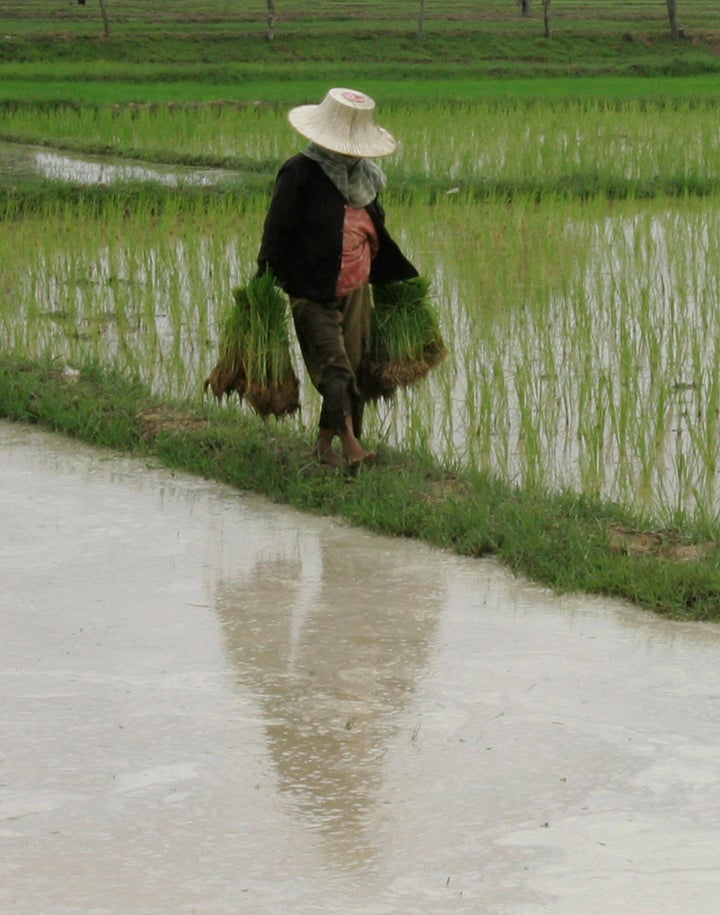
As we watch the Jasmine Revolution continue to unfold in the Middle East, it's worth reflecting on the role of food security as a trigger of unrest. At the time of the first protests in Tunisia and Egypt, bread prices had risen 30 percent in the past year due to global shortages in the supply of wheat.
What's striking is how this is reported as some sort of novelty or unexpected phenomena. Upon close examination of history, food security issues tend to accompany protests and revolutions. What should concern world leaders is not what has happened, but that we can expect much more of what's already occurred. Early last month, the FAO -- the primary food and agriculture monitoring organization of the United Nations -- issued a release announcing global record highs for food prices, and the seventh consecutive month of price increases.
Those who forget history are doomed to repeat it, the old adage cautions. Why are we not learning? The cautionary tails are there. From France to India, hunger and food production have long played a major role in revolutions and social upheaval. Food security, then and today, remains a trigger of conflict.
While difficult to imagine given their culinary eminence today, many Frenchmen subsisted only on bread and little else to sustain themselves in the 18th Century. The roots of the French Revolution were created during the harsh winter of 1788-89, when wheat shortages caused the price of bread to rise nearly 90 percent in one year, and the people turned on the government, demanding relief. During the Revolution itself, bread riots again erupted, helping to ignite the infamous Reign of Terror in 1793.
Nearly 150 years later in India, Gandhi set out on his famous "Salt Satyagraha," walking 240 miles to the coast to produce salt without paying tax, enduring beatings after violating the British Raj salt laws and growing a movement. This display of civil disobedience encouraged millions of Indians to follow suit, setting the stage for the long-term recognition of claims by Gandhi and India's Congress Party.
In its most recent edition, The Economist asked "the nine billion person question" -- that is to say, how will the world feed the more than two billion new mouths that will likely be added over the next 40 years. There were some answers -- e.g., higher yielding and "biofortified" crops, better use of technology and irrigation, reducing waste - but certainly not enough to make up the difference when you consider one billion individuals around the world are already suffering from chronic hunger today. Add in the fact that many in the emerging middle class in China and India have a growing appetite for meat, and the dramatic effects of climate change, and you have a formula for serious unrest.
Food -- one of the staples of human survival -- has long been present, if on the perimeter, of revolutions and protests across the world. Price increases have forced into poverty millions of people who must spend in excess of 50 percent of their income on putting food on the table. As the numbers of hungry mouths grow, and we have precious few answers, we should all expect food to migrate from the periphery of protests and conflict to the center.
Consider Bangladesh, the world's eighth most populous country. I visited Dhaka recently to observe our work on the ground, and saw long lines for modest portions of rice distributed by aid trucks. This is the reality of survival for many in Bangladesh, particularly since the price of rice has increased by 100 percent over the past three years. But what happens when prices continue their trajectory? What happens when there's less and less rice in those aid trucks while the population of Bangladesh continues to rise? These are unpleasant ideas to consider, but to deny them entirely is to live in fantasy.
As world leaders evaluate their strategies for food security as the world's population continues to grow, they should keep in mind the close historical linkages between food security and revolutions. This issue is too complicated and too central to be addressed by governments alone; researchers, organizations and engaged citizens must join in a movement and heed the lessons history has shown us. Otherwise, it could be our citizens on the streets next.